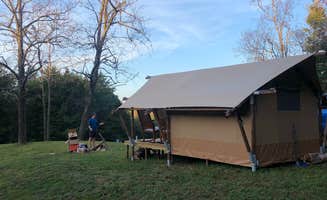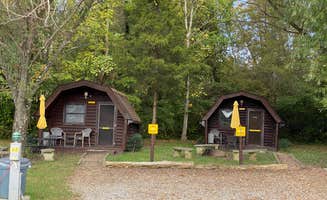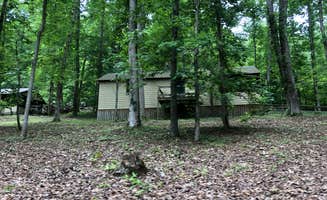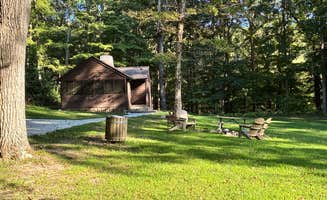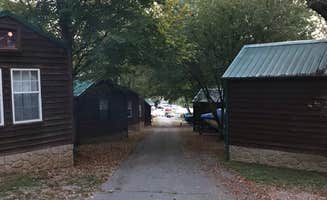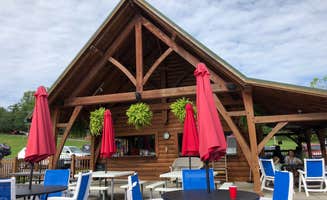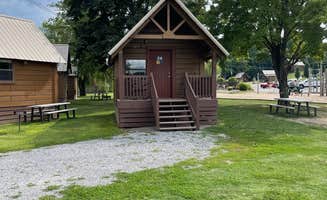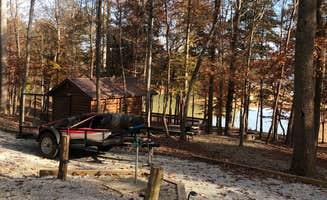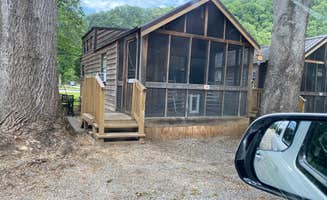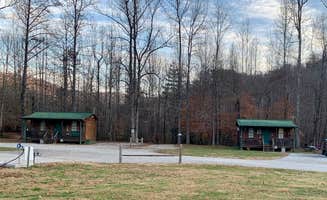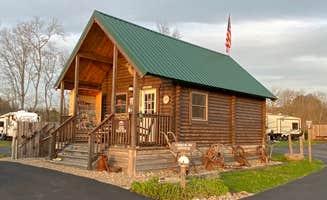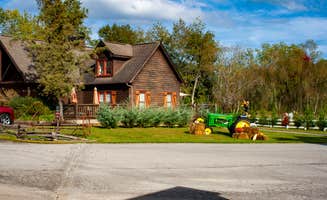Cabin camping near Knoxville, Tennessee offers accommodations across various elevations, with sites ranging from 800 to 2,500 feet above sea level throughout the surrounding area. Many rustic cabins provide wood-burning stoves for heat during winter months when temperatures in the region can drop below freezing. Access roads to several cabin sites remain open year-round, though some close seasonally.
What to Do
Hiking accessible trails: At Elkmont Campground, numerous hiking trails branch directly from the campground. "I love elkmont! It's located only a short drive from Gatlinburg and several major hiking trails including Chimney Top. It's also beautiful, surrounded by trees, you can hear waterfalls, plenty of space from other campers," notes one visitor.
Tubing on Little River: Little Arrow Outdoor Resort offers direct river access for summer water activities. A visitor mentioned, "We stayed in a tiny home with my family for Spring Break. Can't wait to go back." The river provides gentle currents suitable for family tubing during summer months.
Historical exploration: Visit the Daisy Town ghost town near Elkmont Campground. "The campground has a wonderful area and the history of the place is amazing," comments one camper. This abandoned vacation community contains several open cottages and cabins undergoing preservation, accessible via a short drive or walk from the campground.
What Campers Like
River proximity: Many visitors praise Greenbrier Campground for its riverside sites. "Sites are narrow and fairly close together, although they've done an excellent job of maintaining the heavy trees around the river and on the 'treelawn' area which separates each site. This helps to make a narrow space seem deceptively private," explains a reviewer.
Private bathroom facilities: Multiple cabin locations feature upgraded bathroom facilities. A camper at Greenbrier noted, "The bath house appeared to be newer, and will trump your home facilities in many cases! Within the bath house, there are several private doors leading to your own 3 piece bath with shelving and granite counters with outlets, and a stunning double shower."
Wildlife viewing opportunities: Cades Cove Campground remains popular for animal sightings. "This is a very unique spot in the smokies. I have never seen more black bear. It was a very safe distance we watched them about a football field away across a field pretty amazing experience. Make your reservations far in advance this is a destination!" advises one camper.
What You Should Know
Reservation requirements: Most cabin sites require advance planning, particularly during peak seasons. A visitor to Loyston Point Campground shares, "We booked the last remaining camp site along the lake and we couldn't be happier. Great place for kids to hang out, play in the water, and pull the boat right up to our camp site."
Site variability: Cabin quality and size differ significantly between locations. "Stayed here many times and is my favorite campground in the Smoky Mountains. Great location with easy access to Gatlinburg but secluded as well. The campground is beautiful with rivers running through it. Is usually very crowded year round (especially during firefly season), but there is plenty of space between the campsites," reports an Elkmont visitor.
Noise considerations: Some locations experience more ambient noise than others. A visitor to Whispering River Resort mentioned, "We could hear quite a bit of noise from the highway into Townsend." Locations deeper within park boundaries typically offer more quiet.
Tips for Camping with Families
Water activities: Whispering River RV Resort offers family-friendly water access. "We stayed in one of the sites around us. The campground is located off Little Pigeon River. There is a large field for kids and dogs to play," reports a camper. Swimming areas at many locations remain open from May through September.
Playground access: Multiple campgrounds feature play areas. A visitor to Townsend KOA noted, "Super clean, friendly staff, great camp sites. I love the patio sites. Great access to the river for tubing!" Most cabin-oriented campgrounds maintain playground facilities centrally located away from quiet areas.
Educational opportunities: Cabin stays near historical sites provide learning experiences. "Cades Cove has a long paved road where you can see everything from deer, Bear, turkeys, and more. The campground has everything you need. Go on the car tour loop and make sure to stop and look at the cabins and church. History at its finest," recommends a visitor.
Tips from RVers
Site leveling: Many cabin and RV sites require adjustment. A Big Ridge State Park Campground visitor reports, "Site 43. Big site. fairly flat. Just have levelers on one side. Close to the bathhouse and a quick walk to the entrance to get to the store, swim area, etc. Roads are a little narrow in the campground, made it a little hard to back trailer in."
Kitchen facilities: Most cabins provide varied cooking setups. "Our site had a nice tent pad next to my picnic table and grill area. It was not the biggest of the sites at the location but plenty large enough for me, and not far from the restroom," notes a visitor to Elkmont.
Seasonal availability: Operating seasons vary significantly between locations. A camper at Cades Cove reported, "Approx 20 miles from main visitor center. The scenic drive increases congestion and traffic. Camp store is near campsites. Also a ranger station. Several hiking trails are accessible from campground. All driveways shaded, paved, and level."


